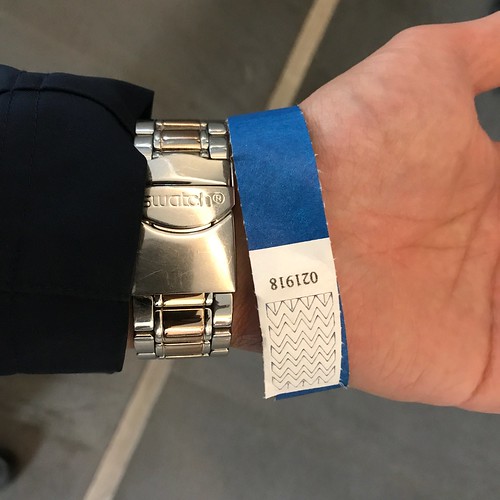In turn became new recruiters mobilizing their very own recruits. This process
In turn became new recruiters mobilizing their very own recruits. This process produced “generations” of mobilization within a team. Each and every additional generation had slower mobilization relative for the 1 prior to it (Fig. S2, middle), similar to effects observed within the study by Rutherford et. al. [3]. In addition, the more future recruits a participant would have, the quicker that participant mobilized (Fig. S2, bottom). Even though causality clearly does not allow a participant’s variety of future recruits to directly have an effect on their own mobilization speed, the statistical connection indicates that those that mobilized immediately also recruited more recruits, independent of other variables.As social mobilization becomes increasingly prevalent, the capability to engineer and influence the dynamics of mobilization will turn out to be ever more crucial within society. We replicated a contest made to mobilize a large variety of people today, acquiring similar statistics of team size and growth to these reported in preceding research. We measured participants’ mobilization speed and what personal traits were connected together with the speed of social mobilization. We discovered that homophily on acquired traitsInfluence of Acquired Traits: Geography and Facts SourceInfluence of Geography. We find help for homophily inside the case of geography, as social mobilization speed was quicker when the recruiter and Flumatinib biological activity recruit had been within the identical city, in comparison with when they were in various cities or nations (Fig. 4; p0). This finding indicates that even in an era of elevated telecommunications and “flattening” on the globe, indeed even for this contestPLOS One particular plosone.orgHomophily and the Speed of  Social MobilizationFigure 3. Older recruits and younger recruiters had more quickly mobilization speeds, as revealed by the interaction of recruiter and recruit age. Within the YuleSimpson paradox the interaction effect PubMed ID:https://www.ncbi.nlm.nih.gov/pubmed/27043007 of two components contrasts using the principal impact of either issue taken individually, as may be the case with recruit and recruiter ages’ partnership with mobilization speed. In such a case the interaction effect supersedes the main impact. AbsentPLOS One plosone.orgHomophily and the Speed of Social Mobilizationplots indicate no information for that interaction. (A) The interaction of recruiter and recruit age group on mobilization time, grouped by the recruiter’s age. For any given recruiter age group, mobilization speed improved using the recruit’s age. (B) The primary impact in the recruit’s age group on mobilization speed, which had the opposite behavior of that identified within the interaction impact observed in (A). (C) The interaction of recruiter and recruit age group on mobilization time, grouped by the recruit age. For any given recruit age group, mobilization speed decreased with all the recruiter’s age. This is a very simple rearrangement of your information in (A). (D) The primary impact of the recruiter’s age group on mobilization speed, which has the opposite behavior of that located in the interaction effect noticed in (B). doi:0.37journal.pone.009540.g(geography and information and facts supply utilised) increased mobilization speed, while homophily was not present on ascribed traits (gender and age). In addition, mobilization speed was faster when recruits heard regarding the contest from extra private sources. Gender and age, when not displaying homophily effects, have been also discovered to have diverse influences on active social mobilization than those reported in a lot more passive social activity propagation: Females mobilized other.
Social MobilizationFigure 3. Older recruits and younger recruiters had more quickly mobilization speeds, as revealed by the interaction of recruiter and recruit age. Within the YuleSimpson paradox the interaction effect PubMed ID:https://www.ncbi.nlm.nih.gov/pubmed/27043007 of two components contrasts using the principal impact of either issue taken individually, as may be the case with recruit and recruiter ages’ partnership with mobilization speed. In such a case the interaction effect supersedes the main impact. AbsentPLOS One plosone.orgHomophily and the Speed of Social Mobilizationplots indicate no information for that interaction. (A) The interaction of recruiter and recruit age group on mobilization time, grouped by the recruiter’s age. For any given recruiter age group, mobilization speed improved using the recruit’s age. (B) The primary impact in the recruit’s age group on mobilization speed, which had the opposite behavior of that identified within the interaction impact observed in (A). (C) The interaction of recruiter and recruit age group on mobilization time, grouped by the recruit age. For any given recruit age group, mobilization speed decreased with all the recruiter’s age. This is a very simple rearrangement of your information in (A). (D) The primary impact of the recruiter’s age group on mobilization speed, which has the opposite behavior of that located in the interaction effect noticed in (B). doi:0.37journal.pone.009540.g(geography and information and facts supply utilised) increased mobilization speed, while homophily was not present on ascribed traits (gender and age). In addition, mobilization speed was faster when recruits heard regarding the contest from extra private sources. Gender and age, when not displaying homophily effects, have been also discovered to have diverse influences on active social mobilization than those reported in a lot more passive social activity propagation: Females mobilized other.